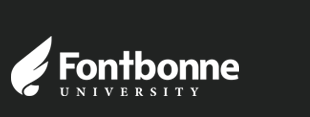
All Theses, Dissertations, and Capstone Projects
Year of Award
1993
Degree
Master of Business Administration (MBA)
College
College of Business & Professional Studies
Degree Program
Business Administration
Department
Business Administration
Keywords
advertising, marketing, coupons, manager, consumer
Abstract
Sales promotion includes all short term offers (or incentives) directed at buyers, retailers, or wholesalers and designed to achieve a specific, immediate response. Incentives directed at consumers include coupons, premiums, free samples, and special exhibits. Sales promotions are often communicated through or coordinated with an advertising program. Consequently, these programs may contribute to the building of brand awareness, to the development of more favorable attitudes, or to some other advertising objective. However, because the primary function of sales promotion is to create immediate and specific behavioral responses by buyers or resellers, sales promotion programs serve different objectives. In recent years a growing number of executives, particularly those marketing consumer goods, have become concerned about the dramatic changes that are taking place in the promotional strategies for their brands. This concern arises from their recognition that sales promotion activities have become an increasingly important part of their marketing effort. 1 2 The sales promotion area has grown so dramatically in recent years because it works, especially in today's more competitive marketing environment. The apparent effectiveness of sales promotion programs has made it more important in ensuring the success of a product in the marketplace.
To demonstrate the importance of sales promotion to today's marketers, consider these facts:
•In 1990 U.S. marketers invested more than $125 billion in sales promotion, more than twice the $49 billion spent in 1980.
•Sales promotion represents more than two-thirds of the marketing budget at most consumer products companies.
•In 1990 trade promotion represented 44 percent of marketers' total promotional budget, consumer promotion represented 25 percent, and media advertising represented 31 percent. (In 1980, 34 percent of expenditures were for trade promotion, 22 percent for consumer promotion, and 44 percent for media advertising.)
•More than 250 billion coupons were distributed in the United States in 1990, up from only 40 billion in 1975; consumers saved $3.5 billion by redeeming 7 billion coupons.
Document Type
Restricted Thesis
Recommended Citation
Prachumphol, Pluethipol, "The Sales Promotion Planning Process" (1993). All Theses, Dissertations, and Capstone Projects. 281.
https://griffinshare.fontbonne.edu/all-etds/281
Restricted
Available to Fontbonne users only. Please log in with your id + password.
If you are the author of this work and would like to make it openly accessible to all, please click the button above.



